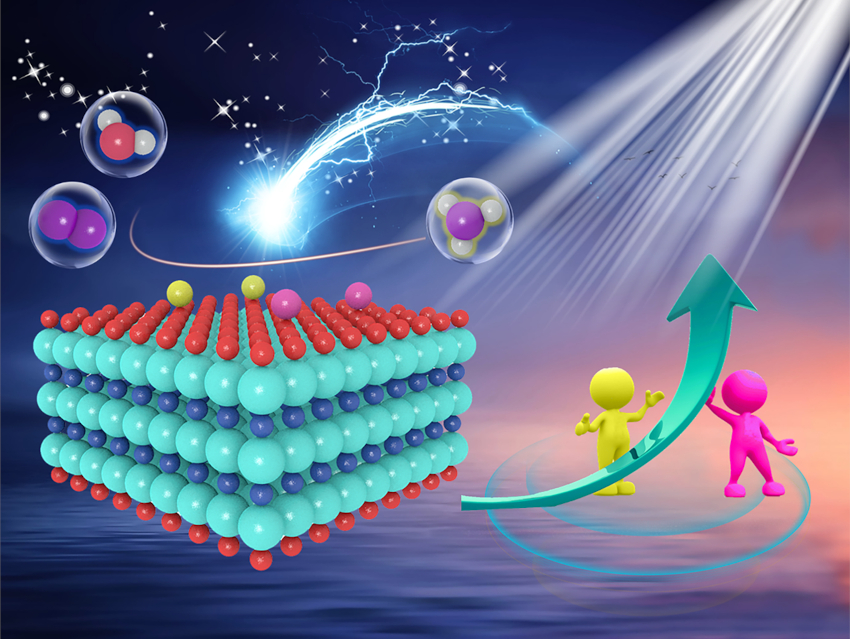The electrocatalytic nitrogen reduction reaction (NRR), which can be used to convert N2 to NH3 under mild conditions, is a promising alternative to the energy-intensive Haber-Bosch process. However, high-performance electrocatalysts are needed to improve NRR activity and selectivity. MXenes, i.e., two-dimensional (2D) transition metal carbides, carbonitrides, or nitrides, could be a useful substrate for such catalysts due to their high specific surface area, good conductivity, and their surface chemistry.
Anmin Liu, Xuefeng Ren, Dalian University of Technology, Dalian, China, and colleagues have prepared RuFe bimetallic nanoparticles on a Ti3C2 MXene support (RuFe@MXene) from RuCl3·nH2O and FeCl3·6H2O using a simple reduction with NaBH4. The team found that, due to the properties of the MXene and a synergistic effect between Ru and Fe, the RuFe@MXene composite can synthesize ammonia efficiently under ambient conditions.
With a Ru:Fe ratio of 3:7, the NH3 yield and Faraday efficiency of the resulting Ru0.3Fe0.7@MXene composite catalyst reached 40.79 μg h−1 cm−2 and 15.25 %, respectively. These values are significantly higher than previously reported for Ru@MXene. This work shows the value of bimetallic MXene-based catalysts in electrocatalysis and could be useful for further work on the electrocatalytic conversion of N2 to NH3.
- Ru and Fe Alloying on a Two‐Dimensional MXene Support for Enhanced Electrochemical Synthesis of Ammonia,
Anmin Liu, Xingyou Liang, Mengfan Gao, Xuefeng Ren, Liguo Gao, Yanan Yang, Haiding Zhu, Guangxin Li, Tingli Ma,
ChemCatChem 2022.
https://doi.org/10.1002/cctc.202101775



